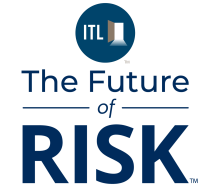Data-led insurance is a necessity, and despite the millions of dollars spent on transformation projects, it is something the sector has yet to make happen. I know what you're thinking, "Sheesh, why doesn't this guy know that insurance already has massive data scale?"
I get it. I really do. But being data heavy isn't the same as being data rich. Certainly, the adage is true: Data is the new oil. However, the issue isn't the volume of data at insurers' fingertips. The challenge is extracting it, refining it and using it operationally in a way that builds massive value in the new economy.
It's this disconnect that I believe has led to a stall zone in insurance, especially in the face of the AI onslaught. It's something that must be overcome to achieve the data-led transformations that are demanded by customers and create the engines to drive the sustainability of the sector.
Data Volume Is Only One Facet of Value
Data is the lifeblood of the actuarial muscle that makes insurance possible. When calculating weather risk, a typical catastrophe model might attempt to use 150 years of meteorological data. That represents approximately 30 terabytes, over 100 million locations, while simulating approximately 100,000 atmospheric and hydraulic scenarios. This, in turn, yields 200 billion records to feed the financial models.
These types of large-scale, elastic computing, on-demand scenarios are where the cloud excels. It's also an example of where we predominantly think about data in insurance.
Collate, analyze, extract insight, build or update the model and then apply the outcomes mostly through underwriting and pricing.
The work is vital but relatively narrow, and massively constraining on an insurer's ability to truly shape propositions.
Data Velocity Is More Vital than Ever
According to IBM, 90% of the world's data has been generated and gathered in the last two years -- a result of the acceleration and velocity of digital services in a commercial world that's recognizing us more as individuals and shaping life experiences to suit specific interests and activities. This trend is set to explode, especially with AI.
Big data has the ability to change the way we see people, which clearly affects risk pricing. But it should also change how we operationalize and use data to create better relationships, to build risk mitigation, to orchestrate claims ecosystems and more.
It can help us to create experiences that help us maintain our cars and reduce risks, such as brake pad wear. It can be applied to usage-based driving capability, which optimizes the way we drive through tips, advice, and education.
Big data can be applied to commercial building insurance that's connected to a building's management system -- continually feeding in live "risk" data, playing it back to owners, and offering options to adjust the risk profile. Or take flood risk: A Google search combined with insights from Earth Knowledge could trigger services like Flood Flash or Flood Re, providing timely support before disaster strikes.
It can also extend to the claims process, where customers are offered personalized repair options that put them in control of their experience and allow them to choose what's most convenient for them.
The examples are endless. But there's a problem - legacy and modern legacy technology have created a fracture. On one side of the chasm, you have data for analytics, and on the other are operating data models that treat data as a perishable asset, constantly mine it for insight and act on that insight, increasingly close to real time. Insurance can do the former but not the latter. IT silos in insurance are killing mass data models and intelligence.
The New Data and AI Operating Model
Nearly 80% of enterprise data is unstructured. It can be found in the form of emails, text documents, research, legal reports, voice recordings, videos, social media posts and more. For insurers looking for answers, this unstructured data is a goldmine. However, it's far more difficult to analyze than structured data.
Fortunately, evolving technologies, such as natural language processing, can enable insurers to unlock the value. Natural language processing, a component of artificial intelligence (AI) that can understand human language as it is spoken, has evolved to a point where it can be used to understand a user's questions (text or speech) and mine insights from vast amounts of unstructured data.
However, the tech stack and operating model needsto transform to make this and any meaningful use of AI a reality. This new DNA for insurance makes insurers look more like e-commerce businesses in the way they operate and in the way they conceive and build products and experiences.
Here's the DNA:
- Built around the customer and not a policy
- Data fluid and based on event streaming
- MACH based (and that does not mean cloud hosted)
- Capable of high levels of adaptivity at speed
- The ability to operate any line of business in any geography
Operationalizing data requires us to think differently. Insurers can use large volumes of data to improve pricing strategies, streamline the claims process, and make better underwriting decisions. And yet they typically struggle to make any changes to product, services and experiences beyond this.
Make no mistake, insurance is a data product and a data-led service. It just keeps pretending it still produces documents called policies, when that concept is really defunct.
What all of us really buy is adaptive personalized coverage typically adjusted somewhat to our risk tolerances and bank balances. The problem is insurers make this super hard to achieve because they don't fundamentally address the underlying way they operate, and in turn how this allows them to operate around data.
This data mobility requires new core technology foundations for most insurers today -- foundations that shift their ability to drive new value through change, reducing the time and effort required to make change happen. We see that most EIS customers become capable of easily developing and adapting what are often called data-products, from operationalizing AI to digitizing personalized and more effective experiences. It's all under-pinned by operational data centered on a customer.
Data is a big part of insurance today, but it is an even bigger part of insurance tomorrow.







